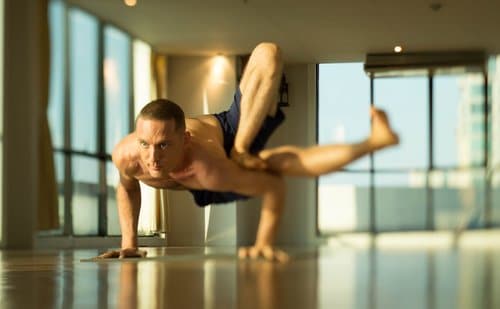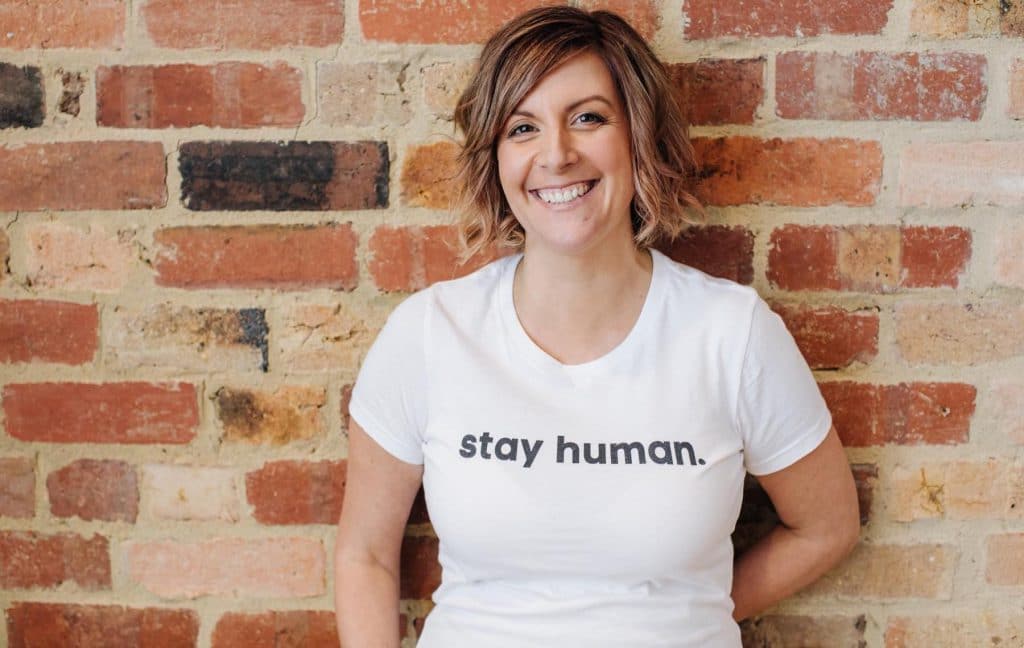In Lesson One, we explored finding that “zero point” within yourself that Michael Grab, our stone balance artist talks about. Accessing a state where you have no internal dialogue, no doubts, not thinking, just doing, present in the moment. Completely focused and absorbed in the activity.
Adrian Cox, our International Yogi, has something similar to offer in terms of state, attitude and focus of attention.
Adrian Cox, founder and director of Yoga Elements, has been teaching yoga for over 16 years and has been practicing yoga for over 20 years. His classes draw upon an in-depth study and practice of yoga, Ayurveda, meditation, philosophy, mind, and linguistics. Adrian teaches around the world including Thailand, Japan and Australia.
He says that one of the central learnings one can get from a yoga practice is that when we find ourselves in a challenging position, that by breathing and focusing, we can actually learn to find enjoyment and even progress further. When we learn to find enjoyment in the challenges, we are connected with our resources and more choices are available to us.
And this makes sense as we know that stress creates a number of undesirable effects on our thinking, decision making and on the body including a narrowing of attention or tunnel vision. When we are stressed, our peripheral vision narrows so that metaphorically and literally we can see less opportunity, options and choices available to us.
Michael, also makes reference to breathing through difficulty. He says he generally always has one hand bracing the unfinished structure (mimicking the total top weight), while using the other hand to place each new rock in the sequence… hold — place — hold — place — inhale — exhale — inhale — exhale. He also recommends sitting in a way so that you have a balanced spine as well. (although, he admits, “most situations in nature do not provide easy ways to sit – more problem solving.. ha” he laughs) And there’s something in this. Focus, breathing, posture and embodied metaphor…
3 things about how you work: (from the field of NLP – the Index Computations model from Leslie Cameron-Bandler)
- Your thinking effects your feelings and physiology.
- Your feelings effect your physiology and your thinking.
- Your physiology effects your thinking and your feelings
You can not separate body and mind, they are the same system.
If you’re feeling stressed, under pressure and doubting your ability to cope how do you imagine your breathing and physiology will be? Where are you breathing from? What are your breathing patterns like? What is your posture like? Are you balanced and symmetrical or hunched or off to one side? Are you carrying tension?
How is that different from when you’re feeling relaxed, resourceful, focused and absorbed in the experience of doing?
John Grinder, one of the creators of NLP developed something he refers to as ‘the chain of excellence’ which basically goes like this:
Breathing > Physiology > State > Performance
This is John’s ideal sequence for accessing a desired state. Start with your breathing. When you get your breathing right, you can get the physiology right, when you have your breathing and physiology right then the desired state can emerge and from there you will be able to behave and perform in resourceful ways and recognise far more opportunities and choices available to you.
So, let’s start with breathing. Ideal breathing here is breathing in for the same duration as you breathe out. Nice, balanced, even breathing. In for 3 and out for 3. In for 4 and out for 4. All the way up to 6 as long as that it is not too much of a stretch for you, this is, after all, about being balanced and relaxed. Forcing yourself to breathe in and out for longer than is comfortable will be counterproductive. The reason we want balanced breathing is to do with your Autonomic Nervous System or ANS. Your ANS is made up of the Sympathetic Nervous System and the Parasympathetic Nervous System. The Sympathetic Nervous System is your excited, ‘fight or flight’ response. You can access your sympathetic nervous system via your in breath – inhale. The Parasympathetic Nervous System is your ‘rest and digest’ system. You can access your Parasympathetic Nervous Systme via your out breath – exhale. Want to get yourself excited or make yourself anxious? Breathe in for longer than your out breath. Want to calm yourself down? Breathe out for longer than your in breath. For a nice relaxed and resourceful state we want a balanced ANS, and balanced, even breathing.
As you continue to breathe deeply and evenly, you can allow your body to adjust into a nice upright and balanced posture, symmetrical and relaxed.
Add this to the “zero point” technique from lesson one and you have yourself a pretty balanced and resourceful state from which to respond to life and it’s busy demands. With regular practice you can train your body to inhabit this space more frequently.
Developing some awareness and flexibility around your body and breathing when you find yourself challenged will allow you to recognise when your breathing and posture shifts so that you can adjust it to restore balance quickly and easily so you can handle anything life throws at you and maintain that sense of balance in life.
Coming back to embodied metaphor and what Michael says about having a balanced posture when he’s balancing rocks reminded me of a study I read back in 2015 where researchers explored whether participants experiencing physical instability affected their perceptions of relationships, of their own and others. They conducted this research by sitting participants at wobbly tables, on wobbly chairs and having them stand on one leg and another group at stable tables, on stable chairs and standing with two feet planted on the ground. Both groups were asked to rate the stability of celebrity relationships and their own. The results were incredible. The physical experience of instability led participants in unstable, wobbly settings to predict relationships to break up or be unstable and they sought greater stability in their own relationship compared to the other group who did not.
Want to experience a greater sense of balance in life? Start with your body. Balance your breathing, balance your posture and go from there.
Coming up in Lesson 3 – finding enjoyment in life’s challenges.


